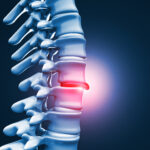
Piriformis Syndrome

Piriformis syndrome occurs when the piriformis muscle, which runs from the lower spine to the top of the thigh bone, presses on the sciatic nerve. As a result, it causes pain, tingling and numbness in the buttocks and, often, down the back of the leg. The pain often worsens as a result of sitting for a long period of time, walking, running, or climbing stairs. While piriformis syndrome may occur for no apparent reason or develop after regular physical activity, it is sometimes caused by a traumatic injury, such as a car accident or a fall.
People with piriformis syndrome often experience tenderness in the buttocks and pain down the back of the thigh, calf and foot. It may start as intense, burning pain in the buttocks and get worse during activities, such as walking or running, that cause the piriformis muscle to press against the sciatic nerve. Symptoms of piriformis syndrome may be long-lasting, often troubling patients for years.
Piriformis syndrome is diagnosed through a physical examination and a review of symptoms. The affected leg may be moved in several different positions to measure pain levels. Additional tests may include MRI or CT scans. Treatment for piriformis syndrome may initially focus on exercises to stretch the piriformis muscle, and conservative treatments such as hot and cold therapy, massage, and taking a break from activities that may cause pain. Nonsteroidal anti-inflammatory medication may be used for pain relief. If discomfort persists, steroid injections into the piriformis muscle and the sciatic nerve may help to relieve pain. In severe cases, surgery may be necessary to relieve pressure on the sciatic nerve.
Book an appointment
"*" indicates required fields







